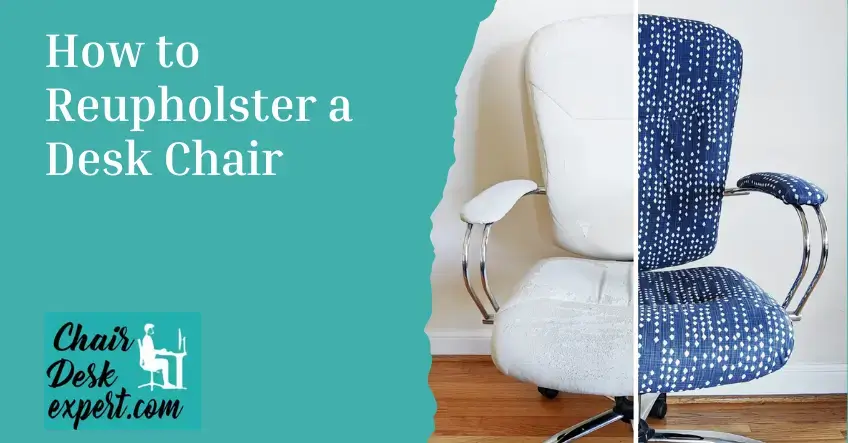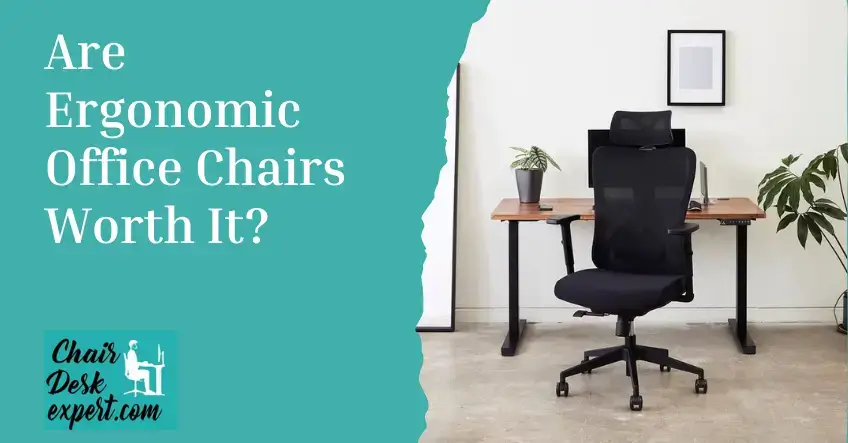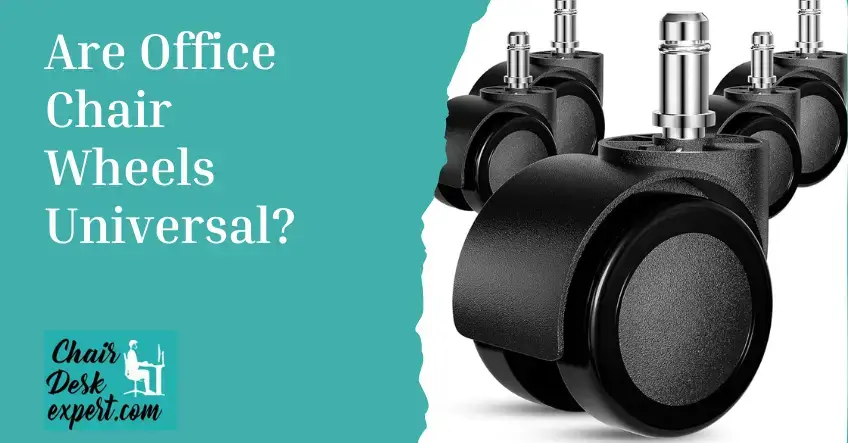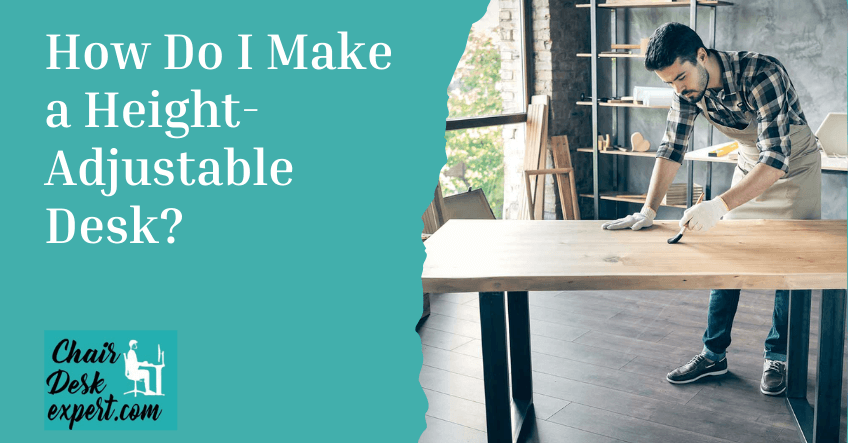Are you finding the solutions to fix a broken office? Broken office chairs are annoying and are a leading cause of discomfort and reduced productivity.
We are here with all the easy solutions on How to fix a broken office chair, whether it’s that irritating squeak, wonky wheels, or your seat playing a daily descent game.
We understand the issues and it’s time to solve them. The good news is that many of these common chair problems can be fixed with essential tools. Here is How To Fix A Broken Office Chair and all other issues.
How to fix a broken office chair, sinking, squeaky, has a broken base, or is wobbly.

Broken chairs cause discomfort and are less supportive. It may cause health issues and decrease work potential. We have found How to fix a broken office chair, whether due to squeaking or the chair sinking.
>> Read Also: How To Reupholster A Desk Chair
Common Causes of Broken Office Chairs:
Firstly, identifying why your chair keeps lowering is crucial for effective repair. Typically, the issue lies in the weakening of pressure within the piston mechanism, leading to nitrogen leakage and subsequent chair sinking. Several factors contribute to this problem:
Excessive Load:
The chair is under too much weight, surpassing the maximum allowable load (typically around 300 pounds). This overload can result in a broken piston mechanism.
Abrupt Sitting:
Sitting on the chair abruptly creates a sudden overload, potentially causing the height adjustment system to fail. A gentler approach to sitting is advised to prevent such stress on the mechanism.
>> Read Also: How To Fix An Office Chair That Leans Forward
Depreciation of Parts:
Continuous use over an extended period can lead to wear and tear of the chair’s internal parts, eventually causing depressurization. Regular maintenance can mitigate this issue.
Manufacturing Defects:
Although rare, sometimes the failure might be attributed to a manufacturing defect. However, this is not a common cause of chair sinking.
>> Read Also: How To Stop Bum Sweat On Chairs
1 – How to Fix Sinking Office Chairs:
If your office chair is sinking, the likely culprit is a worn or faulty gas lift. While high-quality gas lifts can prolong chair life, they eventually need repair or replacement.
The most common reason for sinking is defective seals, with more severe issues stemming from misuse or subpar parts. While quick fixes like using a PVC pipe or hose clamp may be tempting, they often lead to more problems.
To properly fix a sinking office chair, invest in a new gas lift and either install it yourself or seek assistance from a local office chair retailer.
2-How to Fix Squeaky Office Chairs:
Squeaks from your office chair can result from various issues, so start by identifying the source for effective repair. The primary culprits are usually the chair mechanism or gas lifts.
To address and eliminate squeaks, obtain basic oil lubricant and apply it to the problematic areas. If you notice squeaking in the chair castors, a bit of oil should do the trick.
After applying the oil, move and use the chair to spread it evenly, allowing a few hours for the lubrication to resolve the issue.
>> Read Also: How To Fix A Sinking Desk Chair
3 – How to Fix a Broken Office Chair Base:
If you’ve encountered cracks or broken struts in your office chair base, it’s crucial to replace it with a new one for safety. Attempting makeshift fixes like tape or brackets can compromise the chair and pose risks if they fail.
However, if the base is in good condition but you’re experiencing movement issues, check the castors for grime or damage. Clean by hand or replace unfixable wheels, or opt for glides to transform it into a stationary office chair.
4-How to Fix a Wobbly Office Chair:
Wobbly office chairs can be a constant source of discomfort, but the good news is they’re fixable. Inspect your chair’s mechanism and seat to identify the problem. Tightening the office chair mechanism or bolts between the mechanism and seat may provide a stable solution.
If troubleshooting doesn’t work, consult your local office chair manufacturer for a professional inspection, diagnosis, and fix for your wobbly office chair.
>> Read Also: How To Buy A Good Home Office Desk
5-How to Fix a Broken Office Chair Arm:
If the hard plastic arms on your office chair have broken or snapped off, the solution is to purchase new office chair arms.
For issues with adjustable arms not functioning correctly, attempt a DIY fix by inspecting the adjustable arm mechanism for grime or dirt buildup.
Clean it and apply oil lubricant, moving the chair to spread it, and then retry the operation. If this doesn’t resolve the issue, consider investing in new office chair arms.
6 – How to Fix Fabric on an Office Chair:
If you’ve noticed wear or rips in your office chair fabric, there are options for repair. For those skilled in reupholstery, purchase high-quality fabric from a local retailer and attempt to reskin the chair.
Alternatively, leave it to professionals at your local office chair retailer for a reupholstering using the highest-grade chair fabric.
Reputable retailers often offer a variety of fabrics and colors for selection. After fixing or reupholstering, maintaining and routinely cleaning the office chair with premium fabric care products is essential.
>> Read Also: How Much A Good Office Chair Cost
Why Is a Good Office Chair Essential for Your Health and Productivity?
Investing in a high-quality office chair is a proactive step towards maintaining your health and enhancing productivity at work. Here’s how it positively impacts your well-being and efficiency:
Comfort:
A comfortable office chair allows you to work with focus. It prevents you from backaches, neck pain, or muscle stiffness.
Posture Support:
Ergonomics chairs are designed to maintain posture and productivity. They are now commonly used in offices..
A good office chair provides support in various positions, helping maintain proper posture at the keyboard and facilitating comfortable stretching.
Lumbar and neck support in ergonomic chairs prevent slouched shoulders, promoting awareness of posture and reducing concerns like back pain and poor concentration.
Active Sitting:
Human bodies are naturally designed for movement, not prolonged stationary positions. A quality office chair encourages active sitting by allowing movement, such as swiveling, and flexing and extending legs comfortably. This promotes improved circulation, prevents stiffness, and enhances overall functionality.
Reduced Workplace Injuries:
High-quality office chairs look costly initially but are highly beneficial in the long run. These chairs reduce the risk of workplace injuries and save your medical expenses.
Tips for Preventing Future Chair Damage:
Don’t Use Broken Chairs:
Chairs missing wheels, armrests, stuck at one height, or sitting at an uncomfortable angle are signs of damage. Continuing to use such chairs, even if they seem safe, can lead to further issues. It’s advisable to invest in a new, fully functional chair to ensure safety and comfort.
Make Adjustments in the Morning:
At the beginning of the workday, take a few minutes to adjust the headrest, armrests, and overall height of the chair. This proactive step ensures a comfortable seating position and reduces distractions later in the day.
Avoid Tipping the Chair:
Leaning over or kicking up feet throughout the day increases the risk of tipping the chair, leading to potential injuries. Keep the chair level to minimize this risk.
Take Regular Breaks:
Prolonged sitting is detrimental to long-term health. Stand up, stretch, and take a short walk at least once an hour. This not only reduces the risk of health issues but also provides a break from prolonged sitting.
Don’t Sit in Pain:
Enduring discomfort while working may seem manageable, but it can lead to more significant pain in the future. Take breaks, stretch, and address any discomfort promptly to maintain focus and productivity.
Lock Rolling Casters and Wheels:
While convenient, chairs with wheels can pose a hazard. Lock rolling casters when sitting down to prevent unexpected chair movement and potential injuries.
Consider Weight and Height Limits:
Be mindful of weight and height limits when selecting office chairs. Ensure that chairs support the weight of users adequately, and consider ergonomic factors, such as proper seat height for comfort and support.
Taking these preventive measures can contribute to the longevity and safety of office chairs, promoting a comfortable and hazard-free working environment.
FAQs on How to fix A broken office chair!!
Q: Why Do Office Chairs Wobble?
A chair may wobble due to issues with the chair base or control mechanism. To identify the cause:
- For the chair base, turn it horizontally to lift casters off the floor.
- For the control mechanism, pivot the seat from side to side. If it wobbles where the pneumatic cylinder and control mechanism join, the control mechanism is likely faulty and needs replacement.
Q: How Do You Stop Wheels From Squeaking?
Office chair wheels squeaking may be caused due to debris. To fix it, turn the chair upside down, spin the wheels to remove large debris, and clean individual wheels with a rag soaked in isopropyl alcohol.
Q: What Is The Average Recommended Maximum Weight For Office Chairs?
Most chairs have a maximum weight limit of 225 pounds. If you exceed this weight, consider a specialized “Big & Tall” office chair designed for larger individuals.
Q: What causes an office chair to not stay up?
A: Over time and extensive use, the seal in the chair cylinder wears out, causing it to leak. This wear and tear in the cylinder are the main reasons why the office chair doesn’t stay up.
Q: What makes a bad office chair?
A bad office chair lacks ergonomic support for different body parts, including hips, knees, elbows, and the spine. A good office chair supports the natural body of the spine and contains quality armrests and headrests.
Conclusion on How to fix a broken office chair!!
So, How to fix a broken office chair? Broken office chairs can be fixed by simple methods. In this guide, we have discovered the reason for broken office chairs and how to repair common problems, such as sinking chairs, squeaky wheels, and broken arms.
From our details, it is clear that a well-maintained chair is essential for comfort. It supports our posture and prevents us from adverse health risks.









